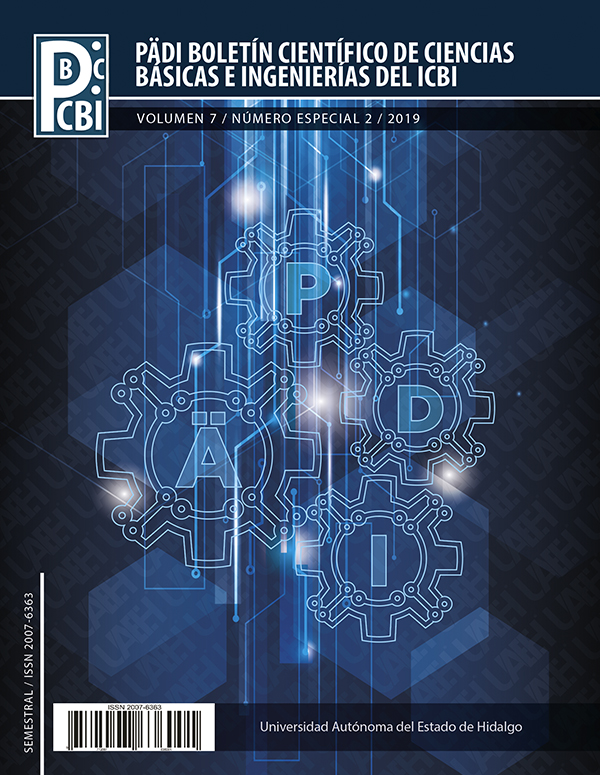Composite material with superhydrophobic corrosion-resistant properties from kaolin particles and recycled polymers
Abstract
Currently, the study of the phenomenon of superhydrophobicity has made very significant advances, one of which is the obtaining of superhydrophobic coatings based on composite materials in order to improve the properties of some materials, such as: corrosion inhibitors, the reduction of the adherence of liquids on the surface in these materials. Since some anticorrosive coatings are really expensive, including the manipulation of the technique. With the application of nanotechnology there has been greater progress, this is due to the excellent methods for obtaining coating with anti-corrosive and superhydrophobic properties. In the present article, a superhydrophobic composite based on nano particles of kaolin - recycled polymers is presented, with innovative application as a coating, presenting anticorrosive and non-moisture properties; for low carbon steels, the composite was deposited with a Cartesian robot with spray deposition, and therefore homogeneous coatings with expected characteristics were obtained. Fourier Transform Infrared Spectroscopy (FTIR) indicates the presence of the functional groups Ac. Carboxylic (COOH) at 2920 and 2853 cm-1, characteristic of highly hydrophobic surfaces. In addition, approximation methods were applied to measure the contact angle (Reflection and Image Magnification), which showed that the angle is equal to or close to 150º. Corrosion tests with chambers simulating corrosive atmospheres were carried out, favourable results were obtained, which shows that the nanostructured composite has anti-corrosive and superhydrophobic properties.
Downloads
References
Agrawal G. (2017). Wettability and contact angle of polymeric biomaterials. Characterization of Polymeric Biomaterials. El Sevier, p. 57-81
Bich, C. (2005). kaolin, Contribution, Nature Materials, Applied Surface Science, p. 657-667.
Farmer, V. C. (2007). The layer silicates, in The Infrared Spectra of Minerals. En The Mineralogical Society. London: V. C. Farmer. p. 331-363
Feng L., Jiang S, Zhu D. (2002). Superhydrophobic surfaces: from natural to artificial, Adv. Mater. 14, p. 1857–1860.
Kang Y., J. Wang, G. Yang, X. Xiong, X. Chen, L. Yu, P. Zhang, (2011). Rapid fabrication of large-area, corrosion-resistant superhydrophobic Mg alloy surfaces, ACS Appl. Mater. Interfaces 3, p. 4404–4014.
Kosmas, E., & Angeliki Tserepi: Evangelos, G. (2017). Durable superhydrophobic and superamphiphobic polymeric surfaces and their applications: A review. En Advances in Colloid and Interface Science, p. 132-157
Lafuma A., Quere D., (2003). Superhydrophobic states. Nature Materials, Applied Surface Science, p. 457-460.
Landolt D. (2013) Corrosion et chimie de surfaces des métau, Quinta edicion.
Mengnan Qu, S. L. (2017). Fabrication of recyclable and durable superhydrophobic materials with wear/corrosion resistance properties from kaolin and polyvinylchloride. Applied Surface Science (410), p. 299-307.
Mengnan Q. ∗, Shanshan L., Jinmei H∗, Juan Feng, Yali Yao, Xuerui Ma, Lingang Hou, Xiangrong Liu. (2017). Researching the fabrication of anticorrosion superhydrophobic surface on magnesium alloy and its mechanical stability and durability, Chem. Eng. J. Applied Surface Science, p. 415–424.
Morán-López, J. L., (1994). “Th eoretical Studies and Modelling of Nanostructured Materials: A Challenge for the 1990s”, Comput. Mater. Sci., p. 72-80.
Otero E. (2012) Corrosión y degradación de materiales, Cuarta edición, Madrid.
Ponzio, F.; Barthes, J.; Bour, J.; Michel, M.; B d ́ ’Ischia, M.; Ball, V. (2016). Oxidant Control of Polydopamine Surface Chemistry in Acids: A Mechanism-Based Entry to Superhydrophilic-Superoleophobic Coatings. Chem. Mater. 28, p. 4697 – 4705
Romero E. & Universidad Complutense (2011), Las Arcillas: Propiedades y Usos. Madrid.
Serrano J., Alanis J., Yañez R., Torres B. (2017). Robot cartesiano para la fabricación de recubrimientos de materiales nanoestructurados utilizando la técnica de roció por spray. México, p. 3-8
Shang, S. M.; Li, Z.; Xing, Y.; Xin, J. H.; Tao, X. M. (2010). Preparation of Durable Hydrophobic Cellulose Fabric from Water Glass and Mixed Organosilanes. Appl. Surf. Sci., 257, p. 1495 −1499
Simo, O. P., & Shaojun, Y. (2017). Superhydrophobic film coatings for the inhibition of corrosion. En Interface Science and Technology, p. 133-184
Vazirinasab V. R. Jafari, G. Momen (2018), Surface & Coatings Technology, 341, p. 40–56
Woodward I.; Schofield, W. C. E. Durable (2015) superhydrophobic wool fabrics coating with nanoscale Al2O3 layer by atomic layer deposition, Appl. Surf. Sci. 349, p 876–879.
Yamashita, H.; Nakao, H.; Takeuchi, M.; Nakatani, Y.; Anpo, M. (2003). Coating of TiO2, Photocatalysts on Super-Hydrophobic Porous Teflon Membrane by an Ion Assisted Deposition Method and their SelfCleaning Performance. Nucl. Instrum. Methods Phys. Res., Sect.
Yang N., Jicheng Li, Ningning Bai, Lan Xu, Qing Li (2017). One step phase separation process to fabricate superhydrophobic PVC films and its corrosion prevention for AZ91D magnesium alloy. El Sevier, p. 1-9
Young T. (2002). An essay on the cohesion of fluids, Tercera edición.
Wang S., & Jiang F. (2010). Definition of superhydrophobic states, El Sevier, p. 50













